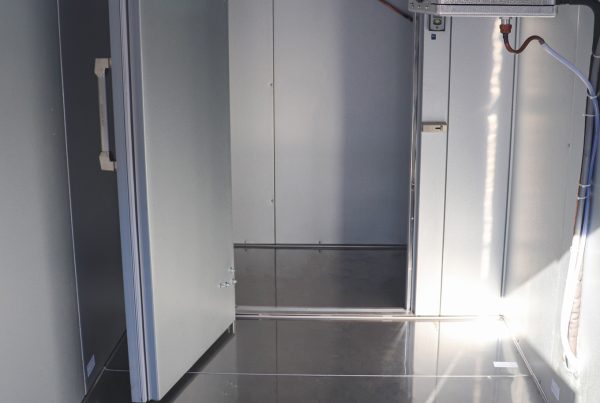It used to seem like motor carriers would “look the other way” when it came to the way shippers filled out their bill of ladings. As long as the freight class that went along with the description was “close“ to what they were shipping, the carriers never bothered with it. However, now there is too much of an extra revenue source for the carriers to ignore these poorly filled out descriptions and have incentivized dock workers to capitalize on shippers who do not fill this out the proper way.
The biggest mistake people make when filling out a bill of lading is they simply put a basic description of the product like “plastic figurines”. The problem is that plastic figurines are a density item according to the NMFC and can be classified at any class from a 70 to a 400 (which is a difference of about 250% in price).
What a Bill of Lading Should NOT Look Like

Without a classification number, the carriers have every right to bill out at a class 400 if “plastic figurines” is all they are given. The proper way to describe this item on a bill of lading is to write a description which includes the NMFC issued number. This is a perfect way to describe this item “Plastic Articles, NMFC #157320 Sub 8, Class 85.”
Elizabeth LaFleur, freight auditor for Logistics Management, Inc., says shippers will cut down on a lot of headaches if they followed this simple process. LaFleur says, “When a carrier see’s a poor description, they red flag it and can classify it at a much higher class. If the description on the bill of lading is vague, a lot of times there is nothing that can be done to fight it. However, if the item number is on the bill of lading then there, is no problem.”
Not only can this be a hassle, the cost can be significant to a shipper. The way it is nowadays in the freight world is if a shipper does not fill out their bill of lading accurately they get nailed not only with the difference in the freight class but also with a “Weight & Inspection” fee which can be as high as $30.00.
Recently I visited a prospect that was getting overwhelmed with Weight & Inspections from carriers. They pulled their bill of ladings for me and on them was the description for “tools”. There was two problems with this description. First, “tools” is too vague of a description and second, they were actually shipping drive shafts and other engine parts for race cars.
Don’t laugh, they are not alone. In fact, many shippers have similar scenarios. What is a familiar story at a lot of companies is that some carrier rep provided a description 20 years ago and that is the way bill of ladings have been filled out ever since.
There is no descriptions in the NMFC for just “tools” so this description would trigger dock workers to perform a W&I to change the class. You can bet they will change it to the highest possible class for a tool.
What was interesting in this example is that when we properly classified their products, most of the engine parts were actually a lower class than the class the carriers were billing them at under “tools”.
By doing nothing more than helping this customer to fill their bill of lading properly this customer lowered their freight cost by about 12%. Of course, the president of that company and I are friends for life now.
What can you do?
There are two things that you can do to eliminate carrier inspections. First, get the weight right. Once the carriers determine you to be one who “guesses low on weight”, then you are flagged in their system. You will be nailed every time by W&I teams.
Secondly, and most important: be as accurate as possible with your description. Make sure you have the most up to date NMFC number followed by the description (the way it is read in the NMFC). When your bill of lading is properly filled out, the clerk at the carrier is more likely to move to the next bill of lading.
What a Bill of Lading Should Look Like

This is the text book way to fill out a bill of lading.
Now it is very important to follow these instructions more than ever. Not only are the carriers looking for the extra cash, the NMFC guide is changing all the time. Sometimes they are making change which make the classes higher. Sometimes they are actually changing them to be lower. The most important part is get with someone who is very familiar with the NMFC guide and get them to properly fill out your bill of lading the correct way.
Article provided by Newgistics Freight Services
Contact Tim Walsh at 908.879.2940 twalsh@newgisticsfreightservices.com
Truckload…Flatbed…Rail Shipments : 800.426.8896 # 5




Great website, and the contents are excellent and the in the related post — the article over — http://blog.uscooler.com/national-motor-freight-classification-business/ —is just excellent.
and if anyone wants more information they can contact with me.
thanks.